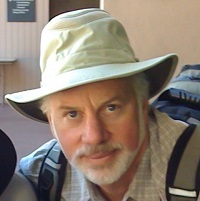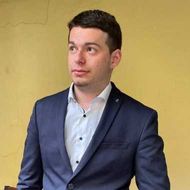- A
- A
- A
- ABC
- ABC
- ABC
- А
- А
- А
- А
- А
- HSE University
- Faculties
- Faculty of Social Sciences
- School of Psychology
- News
- Lecture on Cultural Development of Mathematical Ideas
-
Education
-
The School
- About
-
Laboratories
-
- The Scientific-Educational Laboratory of Ability Psychology
- Center for Sociocultural Research
- International Laboratory of Positive Psychology of Personality and Motivation
- Laboratory for Cognitive Research
- Cognitive Psychophysiology Laboratory
- Vision Modelling Laboratory
- Laboratory for the Neurobiological Foundations of Cognitive Development
-
- Partners
- Staff Members
- International Cooperation
Phone: +7 (495) 772-95-90 *15366
Email: dekpsy@hse.ru
Address: 101000, Moscow, Armyanskiy per. 4, c2
Address for correspondence: 20 Myasnitskaya Ulitsa Moscow 101000 (School of Psychology)
In press
Popyvanova A., Pomelova E., Bredikhin D. et al.
IEEE, 2024.
Zaidi S. G., Orazmukhametova L., Zahra S. K. et al.
TPM - Testing, Psychometrics, Methodology in Applied Psychology. 2025. Vol. 32. No. S8. P. 2025-2035.
Tunkevichus O., Bagrationi K.
In bk.: The Proceedings of the 20th European Conference on Innovation and Entrepreneurship. Vol. 20. Iss. 1. Academic Conferences International Limited, 2025. P. 759-766.
Ivanova M., Germanova K., Petelin D. et al.
Biorxiv. 005140. Cold Spring Harbor Laboratory, 2024
The School promotes cutting-edge research, multidisciplinary studies, education in English. We are increasing the number of courses in English all the time and have started two English-speaking Master’s Programs. Our researchers have access to Eye trackers, TMS, multi-channel EEG, MEG and fMRI techniques.
The School also aims to train psychologists, who can apply their knowledge in the fields of economics, banking, human resources management, organizational development, ecopsychology and team-building.

Lecture on Cultural Development of Mathematical Ideas
On March 22, HSE’s School of Psychology organized a talk by Professor Geoffrey Saxe, from Graduate School at UC Berkeley, on Cultural Development of Mathematical Ideas. The talk was based on the results of Prof. Saxe’s expedition to Papua New Guinea where he studied a remote Mountain Ok community. In his interview with HSE News Service Professor Saxe talks about his research.

Professor Geoffrey Saxe
My work (and some of the material in my lecture) builds on the Vygotsky-Luria-Leontiev tradition. I trace the interplay between cultural-historical and cognitive developmental processes through the analysis of collective practices of daily life, and I provide a conceptual account of mechanisms of this interplay elaborated in my recent book, “Cultural Development of Mathematical Ideas: Papua New Guinea Studies”.
In my lecture, I pointed out that psychological studies of cognitive development are often conducted without regard for the interplay between the cognitive activities of individuals and the cultural histories of communities – and I regard this as problematic for a variety of reasons. I illustrate a heuristic research framework that illuminates this interplay through studies drawn from a program of work conducted in a remote Mountain Ok community in Papua New Guinea, the Oksapmin. Traditionally, the Oksapmin like their neighboring groups use a 27-body part counting system to represent quantity. Over four periods of fieldwork (1978, 1980, 2001, 2014), I trace the shifting form of the system and the shifting functions it serves as it is reproduced and altered in shifting collective practices of daily life (with a focus on economic exchanges and the introduction of colonial-styled schooling. Though the focus of the talk is on the Oksapmin case, I point to ways that the framework is useful for understanding the dynamics of culture-cognition relations more generally.
To structure my work, for both conceptual and pragmatic reasons, I focus on mathematical cognition, a well-delimited domain; further, as an organizing arena for analysis, I am particularly interested in collective practices with which people are engaged (in which numerical activities emerge).
So, in the Oksapmin world, a focus of my talk, I discuss numerical activities as they emerge in collective practices of economic exchange and in those related to the introduction of schooling. I find the Oksapmin work particularly fascinating because I’ve visited this remote community during a period of rapid social changes (in some ways reminiscent of A. R. Luria’s early studies in Uzbekistan). In my work with the Oksapmin, I am able to illuminate the historical changes in the organization of practices of economic exchange and schooling. I use each as an arena to explore a dialectical interplay between shifting forms of numerical representation (the Oksapmin 27-body part counting system) and the emergent functions that numerical representational activities serve with the shifting organization of collective practices. For example, in pre-contact times the body system served a counting, not an arithmetical function. With the introduction of Western currency in exchange practices, new kinds of arithmetical problems emerged, and new arithmetical functions of the body system emerged with concomitant adaptations in the body counting form. This is quite a complex process, and in my conceptual work, I am involved with three strands of interwoven analyses: micro-, onto-, and socio- genetic analyses of form-function relations (more on this in my lecture.)
In general, though I have a disciplined approach to theory development, I’m eclectic with respect to methods – empirical techniques for gathering information. My work generally begins with a focused ethnography of communities with an interest on possible collective practices that would bear fruit to illuminate the interplay between historical and cognitive developmental processes. I often then turn to more psychological methods for studying social interactions and cognitive activities of individuals sometimes with structured tasks that are intended to provide more information about cognitive activities in practices.
The Cultural Development of Mathematics website provides video and visual supports for Professor Saxe’s recent book, the Cultural development of mathematical ideas: Papua New Guinea studies (Cambridge University Press.) On the pages of this website, you will find video clips and photographs that show scenes from daily life including the Oksapmin 27-body part count system as well as the use of the system to communicate about currency values and to solve arithmetic problems.
- About
- About
- Key Figures & Facts
- Sustainability at HSE University
- Faculties & Departments
- International Partnerships
- Faculty & Staff
- HSE Buildings
- HSE University for Persons with Disabilities
- Public Enquiries
- Studies
- Admissions
- Programme Catalogue
- Undergraduate
- Graduate
- Exchange Programmes
- Summer Schools
- Semester in Moscow
- Business Internship
- © HSE University 1993–2025 Contacts Copyright Privacy Policy Site Map
- Edit


